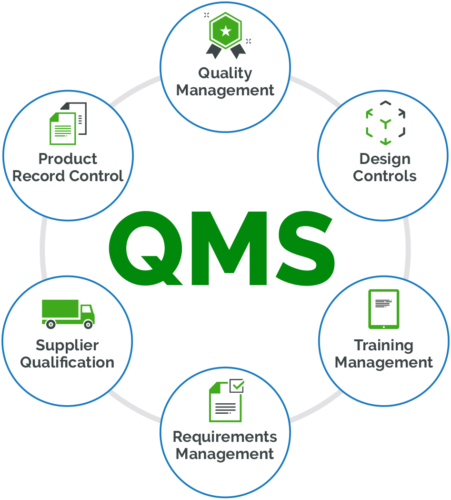Navigating AS9100: Achieving Product Excellence in Aerospace and Defense

In aerospace and defense (A&D) there’s little room for error. Whether it’s an aircraft that’s used to execute a critical mission or a defense system that’s deployed in combat—precision, reliability, and safety are paramount.
Today’s A&D products are more sophisticated than ever, incorporating intricate electronics, materials, and digitized systems. Parts and materials are sourced from a vast and highly interconnected global supply chain network. Any deficiencies in the supply chain could compromise the quality of the final product. Manufacturers must constantly refine their quality measures to navigate these complexities and reduce the risk of catastrophic failures. To this end, they must implement and maintain a comprehensive quality management system (QMS) to ensure process consistency, enhance quality controls, and lower product defect rates. Essentially, a QMS provides organizations with a systematic approach for delivering safe, high-quality products that meet performance expectations.
ESTABLISHING A QUALITY MANAGEMENT SYSTEM FRAMEWORK FOR A&D WITH AS9100
AS9100 is the globally recognized QMS standard for companies designing, developing, and manufacturing aerospace and defense products. Presently, there are approximately 24,000 active certifications that exist worldwide for AS91001. It is endorsed by major industry regulators including the U.S. Department of Defense (DoD), Federal Aviation Administration (FAA), and National Aeronautics and Space Administration (NASA). By fulfilling the AS9100 requirements and obtaining certification, companies gain a competitive advantage through increased brand trust and wider market acceptance. The AS9100 certification requirements for the Aerospace industry ensure high product quality, safety, and delivery standards.
AS9100 REQUIREMENTS FOR AN EFFECTIVE QMS
AS9100 incorporates the same core principles as ISO 9001, which is the QMS standard commonly used across other industries. Key requirements include:
- Quality policy, objectives, and scope (defined, communicated, and enforced by leadership team)
- Quality manual which documents all processes and procedures
- Defined organizational roles and responsibilities
- Action plans for addressing risks and opportunities, achieving quality objectives, and managing changes
- Provision of resources (e.g., people, infrastructure, equipment) to support QMS
- Implementation of process controls (e.g., control charts, training) to ensure all product requirements are met
- Records to support the design and development of the product. This includes customer requirements, bills of materials (BOMs), drawings, outputs, verification and validation, assembly instructions, etc.
- Methods for monitoring and evaluating QMS performance (e.g., internal audits)
- System for driving continuous improvement (e.g., business analytics)
Extending Beyond ISO 9001
To address the unique challenges of the aerospace and defense industry, AS9100 outlines additional requirements that are outside the scope of ISO 9001. They encompass configuration management, risk management, product safety, counterfeit parts prevention, and supplier controls.
STEPS FOR AS9100 CERTIFICATION
After developing the necessary QMS processes and documentation, organizations can pursue the AS9100 certification by performing these steps:
- Put QMS into practice. Follow documented procedures and gather quality data for at least three months.
- Monitor QMS performance and adjust. Conduct internal audits to evaluate how your QMS is performing and make the necessary improvements.
- Complete the AS9100 registration. Select a certified body to perform an audit of your QMS. Upon passing the audit, your AS9100 certification will be valid for three years. An annual surveillance audit will be conducted to ensure that QMS requirements are met.
ACHIEVING AS9100 COMPLIANCE IN THE CLOUD
Managing the extensive product and quality documentation that’s needed for AS9100 compliance can be problematic if you’re using manual processes and disconnected systems (e.g., local hard drives, Microsoft Word, spreadsheets, file cabinets). Updating records manually becomes too time-consuming and costly. It’s also difficult for distributed teams to locate files and keep track of the latest revisions. As a result, you end up with errors and inconsistencies which pose a compliance risk.
Modern cloud QMS and product lifecycle management (PLM) solutions address these issues by providing a single source of truth for organizations to manage product design and quality information. Ultimately, these enterprise systems enable globally dispersed teams to work more efficiently and gain better control of their quality processes.
Connected Quality Management
A cloud-native solution like Arena PLM for AWS GovCloud is uniquely designed to link quality records (CAPAs, approved supplier lists, SOPs, training, etc.) and associated changes directly to the product bill of materials (BOM).
Since automated change processes and revision controls are applied to product and quality documentation, organizations gain full traceability and reduce errors. Product teams and supply chain partners have immediate visibility into design changes, nonconformances, and other items that impact the product. In turn, they can quickly resolve issues and demonstrate closed-loop quality processes. As an added benefit, Arena’s analytics tools enable organizations to regularly monitor product nonconformances, supplier processes, and other key performance indicators to drive continuous improvement.
Stress-Free Audits
By documenting, tracking, and maintaining quality processes in Arena’s secure cloud environment, organizations streamline QMS compliance and expedite their AS9100 certification. Teams don’t have to spend hours compiling records for an audit. Everything in Arena is accurate, up-to-date, and readily accessible with just a few simple clicks.
EMBRACE A MODERN APPROACH TO QUALITY MANAGEMENT
In their pursuit of quality excellence, A&D manufacturers need a secure, cloud-native solution to handle the growing complexity of today’s products and streamline AS9100 compliance.
Embrace a modern approach to quality management with Arena PLM for AWS GovCloud. Watch this demo to learn more.
References



